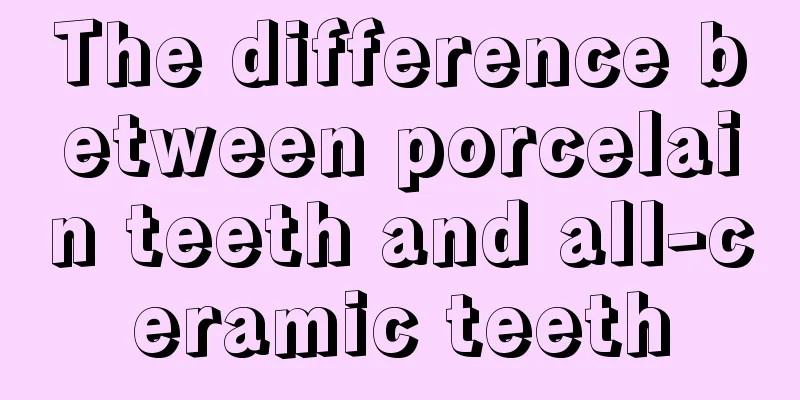The difference between porcelain teeth and all-ceramic teeth

|
There is still a difference between porcelain teeth and all-ceramic teeth, because there are many types of porcelain teeth in life, and different types have different prices. So when we choose porcelain teeth, we must choose what kind of material to use for ourselves based on our personal economic strength. What are the differences between them? Category classification Porcelain teeth are composed of two layers: an inner metal base layer and an outer porcelain layer. They are divided into three categories according to the different materials of the metal base crowns: precious metal alloy porcelain crowns (represented by gold alloy porcelain crowns), non-precious metal alloy porcelain crowns (represented by nickel-chromium alloy porcelain crowns and cobalt-chromium alloy porcelain crowns), and titanium alloy porcelain crowns. 1. Precious metal alloy porcelain crown: Porcelain crowns made of precious metals are called precious metal porcelain crowns. Precious metals have good chemical inertness, making them resistant to oxidation and corrosion. The most commonly used precious metals in dentistry include: gold, platinum, palladium, etc. 2. Non-precious metal alloy porcelain crown: Porcelain crowns made of non-precious metals as metal base crowns are called non-precious metal porcelain crowns. Non-precious metals are easily oxidized at high temperatures and have relatively weak corrosion resistance, especially in a humid oral environment. Metal ions are easily precipitated, which may cause gray discoloration of the gums. Some metals are also allergenic. The most commonly used non-precious metals in dentistry include: nickel, chromium, cobalt, aluminum, etc. 3. Titanium alloy porcelain crown: Titanium should belong to the category of non-precious metals, but because it has many different properties, it is listed separately. Titanium has the advantages of good biocompatibility, corrosion resistance, and low thermal conductivity. However, due to its high melting point, difficult casting process, easy oxidation, relatively poor bonding between the metal base and the porcelain layer, easy collapse of the porcelain layer, and the need to use special porcelain powder processing, its wide application is limited. Not suitable for people 1. If other relatively less molar restoration methods can meet the patient's requirements for beauty and strength, it is not recommended to use gold-ceramic crown restoration; 2. For those who have extremely high requirements for the beauty of the front teeth, avoid using metal porcelain crowns that may cause gray lines on the neck, such as nickel-chromium alloy porcelain crowns; 3. People who are allergic to metals should not use non-precious metal porcelain crowns. Precious metal porcelain crowns should be used with caution. 4. It is contraindicated for use on young permanent teeth that have not yet fully developed; 5. If the tooth is too small to provide sufficient retention and resistance, it is contraindicated to use metal porcelain crowns directly for restoration; |
<<: Successful experience in preparing for twin boy-girl pregnancy
>>: Successful experience of natural cycle transplantation
Recommend
Tips to prevent buttock pain from sitting for a long time
Many office friends sit for seven or eight hours ...
Principles of drug treatment for endometrial cancer
The treatment principles for endometrial cancer s...
How to prevent liver cancer invasion? This kind of diet can prevent liver cancer disease
Liver cancer is a very "vicious and insidiou...
How to correct gluteal muscle contracture
There are many causes of gluteal muscle contractu...
What kind of fruit is nut
There are many kinds of fruits in people's da...
Can I eat Dendrobium candidum for skin cancer?
Can I eat Dendrobium candidum for skin cancer? De...
Experts explain the cause of osteosarcoma
Osteosarcoma, a malignant tumor, makes everyone f...
How to make nail polish dry quickly, 5 tips
We all encounter the same problem when applying n...
What to do if a bug flies into your nose
As we all know, nostrils are the same as our faci...
The secret to growing taller, this is the best way
Many teenagers are worried about their height, bu...
What are the early symptoms of skin cancer
Due to the current living or working environment,...
What is a good drink after exercise
You will feel very thirsty after exercise, so of ...
How long does it take for thyroid cancer to metastasize?
The time from onset to metastasis of thyroid canc...
Is white vinegar an effective treatment for eczema?
In daily life, white vinegar is a common condimen...
How to remove white spots on nails
Many people find white spots on their nails, and ...









